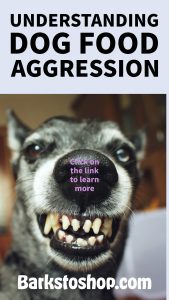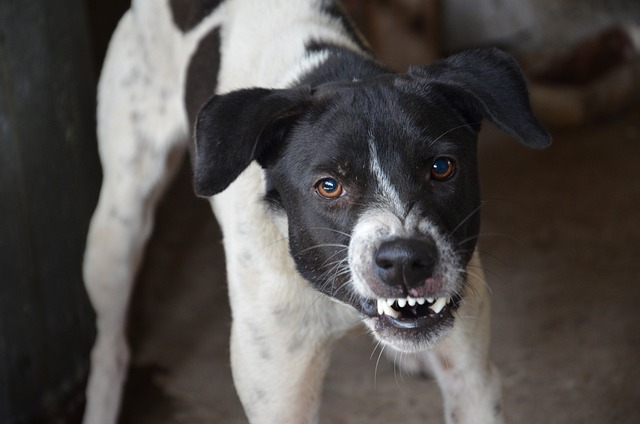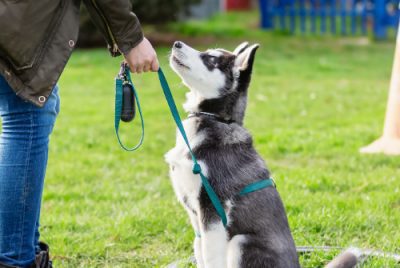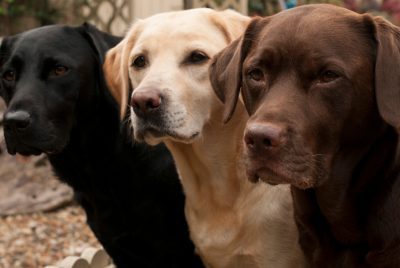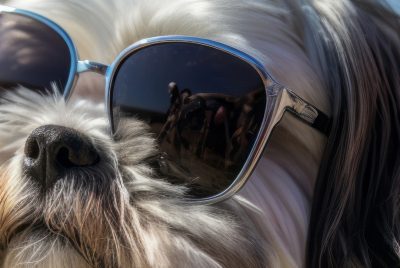Handling Dog and Food Aggression: Proven Strategies
Post Disclaimer
We may earn a commission for purchases made using our links. Please see our Disclaimer to learn more.
Tackling Dog and Food Aggression: Proven Strategies
What is dog food aggression? Why do some dogs exhibit this behavior?
Dog food aggression occurs when a dog becomes possessive and aggressive toward its food. This behavior often involves growling, snapping, or even biting when approached while the dog is eating. There can be reasons why dogs exhibit this behavior, including guarding their resources and lacking training and socialization.
Numerous dog owners encounter the challenge of dealing with dog food aggression. It can be concerning, intimidating, and potentially unsafe. However, there is news. It is possible to manage and ultimately eliminate this issue with the approach. In this blog post, we will delve into the topic of dog food aggression, its causes, and effective methods to address it. By gaining an understanding of what signs to observe to identify triggers for this behavior and taking measures, you can assist your canine companion in overcoming food aggression and promoting a safe mealtime environment from the start.
Understanding Dog Food Aggression
Food aggression in dogs is when they become aggressive around their food. This can include growling, snapping, or biting if approached near their food. It’s rooted in a dog’s pack leader’s behavior and instinct to protect valuable resources. If not managed properly, it can escalate and become dangerous.
Definition of Food Aggression in Dogs
Food aggression in dogs refers to the behavior they exhibit when it comes to their food. This behavior may manifest as growling, snapping, or even biting when approached by others. Dogs with food aggression tend to guard their food against family members, other dogs, and even strangers. A clear indication of food aggression is when they eat in a manner. It’s crucial to identify and address this behavior in order to prevent any harm and ensure the well-being of both dogs and humans.
Common Signs of this Behavior
Dogs may show food aggression in various ways. Growling is a clear sign that dogs feel uncomfortable and defensive around their food. They may also tense up, stare or pose defensively when approached near food. Other signs include guarding the food bowl, snapping, or biting someone who comes too close to their food. These signs can escalate if not addressed promptly. Knowing these signs, which are common signs of this form of resource guarding, will help you manage the behavior effectively.
The Root Causes Behind Food Aggression
Food aggression in dogs can come from different causes, like genetics and surroundings. Some breeds are more susceptible to this behavior than others. A dog’s upbringing and experience, combined with genetic factors, may also play a role. Dogs have natural pack behavior instincts that protect resources such as food. Food-related experiences in the past, like food scarcity or competition, can affect a dog’s food aggression behavior. To manage this problem, it’s important to identify the root causes and handle them appropriately.
Role of Genetics and Environment
The behavior of dogs, including food aggression, is influenced by both genetics and their environment. Some dog breeds may have a likelihood of exhibiting food aggression due to their makeup. However, it’s important to note that not all instances of food aggression stem from a display of dominance. The way a dog is raised, and the environment they are exposed to also play roles in shaping their behavior. Dogs naturally place value on resources like food due to their pack instincts. In a pack setting, the alpha dog typically gets access to resources, which can impact how a dog behaves around food. Understanding the interplay between genetics and environment is crucial for managing cases of food aggression in dogs.
How Past Experiences Influence Food Aggression
The influence of experiences on food aggression in dogs is significant. When a dog has previously encountered competition or scarcity, it may exhibit food behavior to safeguard its resources. For example, if a dog has had to compete with dogs for food in the past, it might develop tendencies during mealtime. Negative encounters such as teasing or losing food can also trigger this behavior. These experiences shape a dog’s conduct. This can lead to defensiveness and aggression when it comes to food among adult dogs who may have had a challenging history. Consequently, it is crucial to acknowledge and address these experiences when dealing with a dog that displays food aggression.
Addressing Dog Food Aggression: A Step-by-Step Approach
Dealing with a dog’s food aggression requires an approach. It’s crucial to seek assistance from a trainer or behaviorist who specializes in aggression. Their expertise will enable them to evaluate the situation and develop a plan. Professional guidance is particularly necessary for cases as it helps both the dogs and their owners navigate through the behavior modification process. Remember that addressing food aggression in dogs takes time, patience, and consistent effort.
Importance of Consistency
Maintaining consistency is the key to dealing with a dog that exhibits food aggression. It is crucial to establish feeding schedules, employ behavior management techniques, and follow consistent training practices. By doing the dog will feel more comfortable and less anxious. It is important to adhere to recommended methods and routines, such as feeding the dog in the location at the same time. Everyone in the family should be on board with the plan. It is essential to use consistent behavior management techniques to ensure that the dog understands what is expected of them. This approach will enable them to make progress in their training endeavors.
Teaching your Dog to Earn Their Food
Teach your dog to earn their food to manage food aggression. Use mealtime as a training opportunity. Reward good behavior by asking for commands, such as sitting or staying, before placing the food bowl down. This teaches dogs that good behavior is rewarded with valuable resources like food. You establish yourself as the provider of food and resources by doing this, reinforcing positive behavior. Teaching your dog to earn their food strengthens your bond and helps address food aggression, preventing the development of a dangerous condition known as bloat.
Establishing the ‘Pack Leader Eats First’ Rule
Establishing the ‘pack leader eats first’ rule can be effective in managing food aggression in dogs. During mealtime, show pack leader behavior by eating before your dog. This simple act displays dominance and reinforces your role as the alpha dog. By doing this, you set a tone of authority and communicate to your dog that resources, including food, are provided by the pack leader. This rule is similar to how wild pack leaders eat first before the rest of the pack, establishing a clear hierarchy. Doing this can help reduce food aggression over time and create a calm mealtime environment.
The Concept of ‘Winning’ the Bowl
Dogs see mealtime as a competition, where they aim to “win” the bowl. To address food aggression, it’s important to understand this concept and modify the behavior associated with it. Instead of allowing your dog to “win” the bowl, you establish yourself as the provider of food by setting rules and boundaries. This concept of “winning” the bowl is a form of dominant behavior where dogs assert their status over valuable resources. By modifying this behavior, you create a more balanced dynamic during mealtime. Implementing a structured feeding routine, including obedience training and establishing rules, helps dogs understand that food is provided by the pack leader, which reduces food aggression tendencies over time.
Practical Techniques to Mitigate Food Aggression
Practical techniques can manage food aggression in dogs. These techniques gradually modify the dog’s behavior, create positive associations during mealtime, and improve the overall experience. Using these techniques, dog owners can make mealtime safer and calmer for humans and dogs.
Incremental Steps to Ease Food Guarding
Addressing food guarding requires taking incremental steps to ease the dog’s defensive behavior around food. These steps should be taken slowly, with patience and consistency. Here are some incremental steps that can help dogs feel more at ease during mealtime:
- Begin by feeding your dog in a separate room, away from distractions and other dogs.
- Gradually reduce the distance between your dog and their food bowl during mealtime.
- Encourage good behavior, such as sitting or waiting, before approaching the food bowl.
- Reward positive behavior with praise and the presence of other family members during mealtime.
- Introduce controlled interactions with other dogs during mealtime, gradually increasing their presence over time.
Benefits of Hand Feeding
The practice of hand feeding can be quite beneficial when it comes to addressing food aggression, in dogs. Hand feeding entails offering your dog food one piece at a time from your hand. This approach fosters a connection between you and your furry companion, strengthening your bond. Furthermore, it allows for observation of your dog’s behavior during mealtime. Another advantage is that hand feeding can serve as an opportunity to incorporate training into mealtime, with each morsel of food acting as a reward for behavior. Ultimately, by choosing to hand feed, you establish associations with food, reinforce conduct, and create a more relaxed and enjoyable dining experience for your beloved canine friend.
Introducing Treats During Feeding Time
Introducing treats during feeding time can significantly help reduce food aggression in dogs. Offering special treats alongside their regular meals creates positive associations with mealtime and reduces the likelihood of food-guarding behavior. Incorporating treats during feeding time not only enhances the overall meal experience but also helps dogs feel more relaxed and less defensive around their food bowl. It reinforces the idea that mealtime is a good thing and a time for positive interaction rather than a time to display aggressive behavior. Gradually, as food aggression subsides, you can phase out the treats, making the transition to better food behavior.
Introducing Touch Around Your Dogs Food Bowl
When it comes to dealing with food aggression in dogs, it is crucial to introduce touch around their food bowl. This process should be approached carefully. In a threatening manner. Defensive behavior can be reduced by getting your dog used to presence while they eat. Start by approaching the bowl from a distance and gradually move closer over time. Eventually, you can touch the bowl while your dog enjoys its meal. This gradual approach helps dogs associate presence with experiences during mealtime, reinforcing that there is no reason for aggression when it comes to food. Remember to be patient and proceed at your dog’s pace, ensuring their comfort throughout each step before moving
Lifting the Bowl During Meal Times
During meal times, when it comes to addressing food aggression, one effective technique in dogs is lifting the food bowl. This involves interrupting the dogs meal by lifting the bowl and then allowing them to continue eating. The purpose of this step is to help dogs become less defensive about their food and reduce any aggression related to the bowl. By lifting the bowl, you are teaching your dog that interruptions during mealtime are not threats but rather a regular part of their routine. Over time dogs learn to be more relaxed and tolerant of presence during meals, which helps mitigate any food aggression behavior. It’s important to perform this action without confrontation, just like all previous steps.
Involving Different Family Members in the Feeding Process
Involving different family members in feeding can help dogs feel more comfortable around mealtime and reduce food aggression. This step includes having various family members participate in feeding, creating a sense of security, and trust during mealtime. Here’s how involving different family members can help alleviate food aggression:
- Each family member should take turns feeding the dog, using the same feeding routine established.
- Family members can offer special treats and praise for good behavior during mealtime.
- By involving different family members, dogs learn that mealtime is a family activity and a time for positive interaction.
- This approach creates a conversational tone around mealtime, reducing anxiety and promoting a calm mealtime environment.
- Involving family members in the feeding process emphasizes the importance of consistency and reinforces behavior modification efforts.
What Not to Do When Dealing with a Food-Aggressive Dog
When dealing with a food-aggressive dog, knowing what not to do is crucial. Dog owners often make common mistakes, unintentionally reinforcing aggressive behavior or worsening the situation. Here are some common mistakes to avoid when dealing with food aggression:
- Avoid punishing dogs for showing food aggression, which can worsen the behavior.
- Don’t force dogs to share food or abruptly remove their food bowls, as this can trigger defensive behavior.
- It’s important to avoid approaching a food-aggressive dog in a threatening manner, as it can escalate aggression.
- Never ignore signs of food aggression; seek professional assistance if needed, as severe food aggression requires expertise to manage effectively.
- Consistency, patience, and positive reinforcement are key when addressing food aggression; avoid overlooking these important factors.
Common Mistakes to Avoid
There are common mistakes that dog owners should avoid when dealing with food aggression. These mistakes can inadvertently reinforce aggressive behavior and potentially lead to dangerous situations. Understanding and avoiding these errors can greatly contribute to a successful behavior modification process. Here are some common mistakes to avoid when addressing food aggression, including punishing the dog for their natural instincts.
- Rushing the process of addressing food aggression can lead to setbacks and frustrations.
- Failing to recognize signs of food aggression, such as growling or guarding behavior, can exacerbate the behavior.
- Ignoring the importance of professional assistance in severe cases of food aggression is a common mistake that can hinder progress.
- Lack of consistency in behavior modification techniques, routines, and training practices can impede progress and confuse the dog.
- Overlooking the role of establishing trust, security, and positive associations during mealtime can hinder behavior modification efforts.
Can Every Dog Overcome Food Aggression?
With this approach, all dogs have the potential to overcome food aggression. However, the severity of the aggression, the temperament of each dog, and their response to behavior modification techniques can vary. It’s important to remember that addressing food aggression requires patience, consistency, and guidance from a trainer or behaviorist. They can assess the dog’s behavior, develop a customized plan, and guide both the owner and the dog throughout the process. While some dogs may show improvement quickly, others may require time and ongoing management. It’s crucial to stay committed to the process and adapt techniques as necessary based on the dog’s reactions and progress. With dedication, understanding, and professional support, every dog has a chance to overcome food aggression and enjoy mealtime peacefully.
Conclusion
In conclusion, addressing dog food aggression requires a step-by-step approach and consistent training. It’s important to understand the root causes behind this behavior, considering genetics, environment, and past experiences. Establishing yourself as the pack leader and teaching your dog to earn their food can help mitigate food aggression. Practical techniques such as incremental steps, hand feeding, introducing treats, and involving different family members during meal times can also be effective. However, avoiding common mistakes like punishment or confrontation is crucial, as these can escalate the aggression. While not every dog may completely overcome food aggression, with patience, consistency, and proper training, significant improvements are possible. Remember, a well-behaved and balanced dog is a happier and healthier companion.
